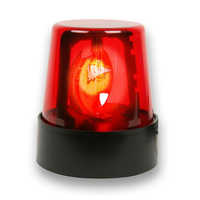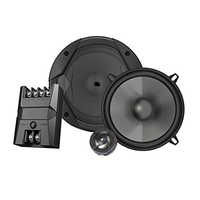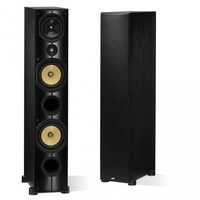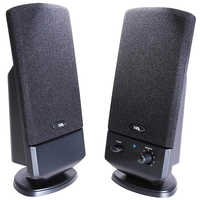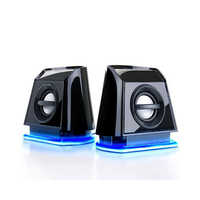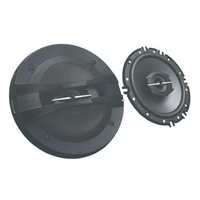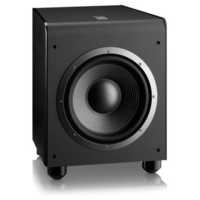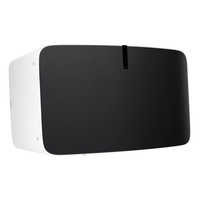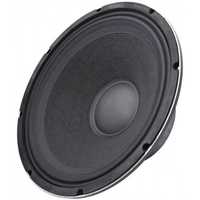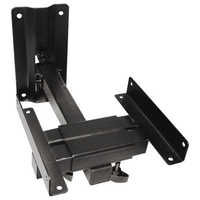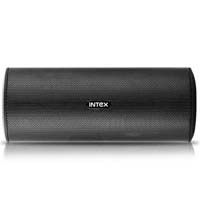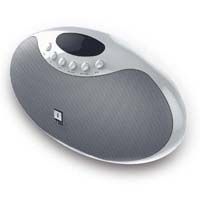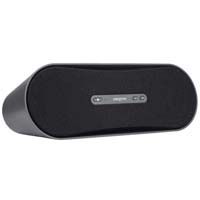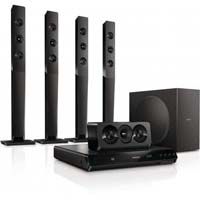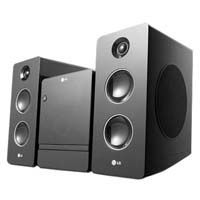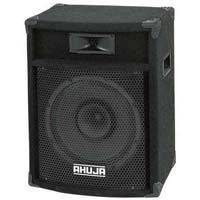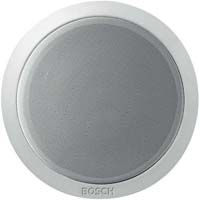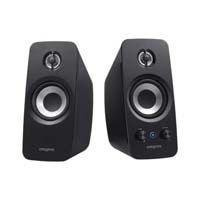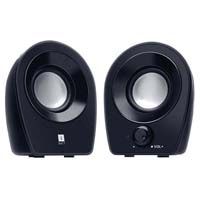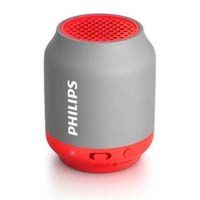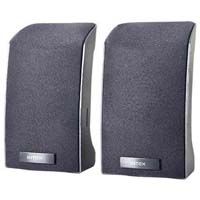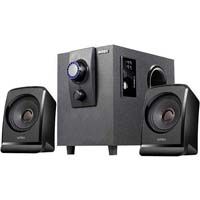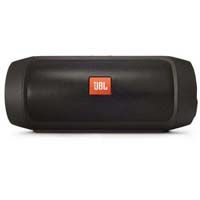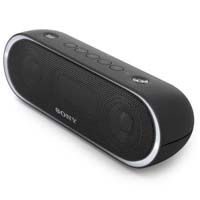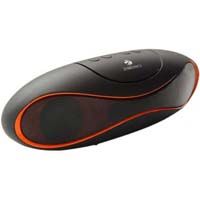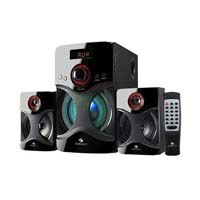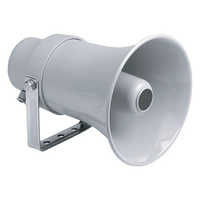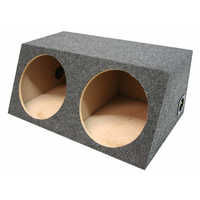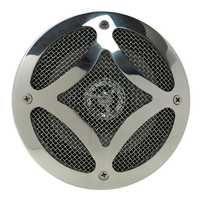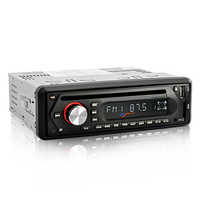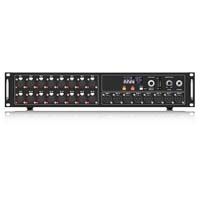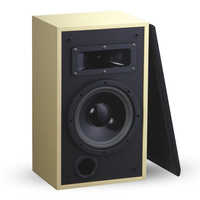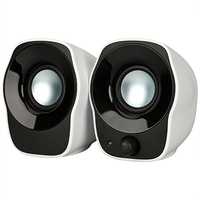Speakers & Speaker Parts
(4969 products)
Speakers & Speaker Parts Manufacturers & Suppliers - TradeIndia.com is a one-stop source for buying the best Speakers & Parts online from verified suppliers, dealers, manufacturers and exporters. You can choose from a wide variety of Speakers & Parts including Speaker System, Speaker Cables & more.
Related Categories
Brass Electrical & Electronic Components
Bulbs & Tubelight
Cable Terminal, Lugs & Socket
Cable Trays
Cables/Cable Accessories & Conductors
Calculator
Capacitors
Chargers
Circuit Boards
Circuit Breaker
Commercial Field
Control Panel Boards
Dc Power Supplies
Decorative Lights
Diesel Generator Sets
Doorbell
ESD Products & Equipment
Earthing Electrodes
Electric Motors & Engines
Electric Power Tools
Electrical / Lighting Products & Components
Electrical Enclosures
Electrical Goods, Equipment & Supplies
Electrical Outlets
Electrical Product Agent
Electrical Safety Products
Electrical Testing & Measuring Equipment
Electrical Transmission Line Goods
Electro Magnets
Electro Stampings
Electronic Data Systems
Electronic Enclosures
Electronic Instrument
Electronic Liquid Level Controllers & Indicators
Electronic Products & Components
Electronic Safe
Electronic Signs & Sign Board
Electronic Testing Equipment
Electronics Agents
Electronics Stocks
Emergency & Safety Lights
Energy Saving Devices
Fibreglass Cable
Financial Field
Flashlights
Flood Light
Frames & Display
Generator Parts & Accessories
Generators
Heat Resistance Wire
Home Automation Systems
Industrial Automation
Insulation Material
Insulation Paper
Inverters & Ups Equipment
Jacks
LED Displays
LED Products
Lamps & Lampshades
Laser
Light Fittings & Fixtures
Lightning Protection System
Mobile Phones, Accessories & Parts
Outdoor Lighting
Plastic Enclosures
Plastic Welding Equipment
Power Cable Accessories
Power Supplies
Power Transmission Equipment
Pressure Switches
Public Address Systems
Radio & TV
Radio & TV Equipment
Rectifiers
Relays
Residential Lighting
Semiconductors
Sensors
Speakers & Speaker Parts
Stainless Steel Wires & Cables
Switchboard
Switches
Switchgear & Allied Products
TV Picture Tubes
Transformer & Transformer Components
Turbine
Voltage Stabilizers
Water Heater
Welding Equipment
Wires/Cables & Accessories
Wiring Harness
Top Speakers & Speaker PartsCategories
Explore More Categories
BTS - 31 20W Bluetooth Speaker RED
Price: 2300 INR (Approx.)/Piece
MOQ - 5 Piece/Pieces
2 Years
Business Type: Manufacturer
ERD TECHNOLOGIES PRIVATE LIMITED
Indian Inquiries Only
Smart Multifunctional Bluetooth Night Light
Price: 1650 INR (Approx.)/Piece
MOQ - 200 Piece/Pieces
Product Type - Smart Multifunctional Bluetooth Night Light
Usage - Mobile Phone
Weight (kg) - Lightweight
6 Years
Business Type: Manufacturer | Supplier
PANAZONE CORPORATE GIFTINGS
Red Wireless Speaker (15)
Product Type - Wireless Speaker
Color - RED, BLUE, GREEN, GREY
11 Years
Business Type: Manufacturer | Exporter
MOBITECH INDUSTRIES LLP.
Black C170 A Artis 16W Output Mini Bt Soundbar With Phone Stand
Support - Bluetooth
Product Type - Bluetooth Speaker
Color - Black
7 Years
Business Type: Manufacturer | Exporter
JAINEX CORPORATE GIFTS
Winding Paper for Voice Coil
Price: 7000 INR (Approx.)/Kilograms
MOQ - 10 Kilograms/Kilograms
15 Years
Response Rate: 92.68%
Business Type: Manufacturer | Distributor
GANPATI ENGINEERING INDUSTRIES
3 Way Line Array Warranty: 2 Years
Price: 1 INR (Approx.)/Piece
MOQ - 1 Piece/Pieces
Warranty - 2 Years
14 Years
Business Type: Manufacturer | Distributor
PINTO ELECTRONICS
Indian Inquiries Only
Grey-Black Portable Sound Bar
Price: 7000 INR (Approx.)/Piece
MOQ - 10 Piece/Pieces
Support - USB, Remote Control, Aux-in, Bluetooth
Color - Grey-Black
Product Type - Portable Sound Bar
3 Years
Business Type: Manufacturer | Supplier
GENIUS TECHNOLOGY
Indian Inquiries Only
Indian Inquiries Only
Black Mp-12000 Mp-16000 Mp-18000 Power Amplifiers
Price: 86000.00 - 100000.00 INR (Approx.)/Piece
MOQ - 1 Piece/Pieces
Dimension (L*W*H) - 483x510x132 Millimeter (mm)
Frequency Response - 20Hz-20kHz Kilohertz ( KHZ )
Product Type - Power Amplifier(
2 Years
Business Type: Manufacturer | Supplier
Manohar Radios
Indian Inquiries Only
Ivoltaa Earnetic X5 Portable Wireless Tws Bluetooth Speaker Black
Price: 567.80 INR (Approx.)/Piece
MOQ - 100 Piece/Pieces
6 Years
Business Type: Distributor | Supplier
VOLTAA GLOBAL
10K Mah Powerbank With In-Built Bluetooth Speaker Cabinet Material: Anti-Slip Matte Black Finish
Price: 1100 INR (Approx.)/Piece
MOQ - 20 Piece/Pieces
Dimension (L*W*H) - 135 x 65 x 22 Millimeter (mm)
Size - 135 x 65 x 22 mm (L x W x H)
Product Type - Power bank with InBuilt Bluetooth Speaker
8 Years
Business Type: Manufacturer | Supplier
HIVE ELECTRONICS L.L.P.
Black 5.1 Electric Bluetooth Speaker
Price: 699 INR (Approx.)/Piece
MOQ - 1000 Piece/Pieces
Size - Different Size
Color - Black
Support - Bluetooth
2 Years
Business Type: Manufacturer | Distributor
P V ELECTRONICS
Grey Horn Loudspeakers
Price: 1000.00 - 6000.00 INR (Approx.)/Piece
MOQ - 3 Piece/Pieces
Support - Bluetooth, Aux-in, FM Radio, Remote Control, NFC, USB, Guitar Input, SD Card
Product Type - Loudspeaker
Usage - Computer, Home Theater, Mobile Phone, Karaoke Player, Portable Audio Player, Stage
14 Years
Business Type: Distributor | Supplier
TOYO TECHNICAL SERVICES
Brown Dvaio S1400Bt Wireless Bluetooth Speaker
Price: 1420 INR (Approx.)/Piece
MOQ - 10 Piece/Pieces
Support - FM Radio, Bluetooth
Product Type - Bluetooth Speaker
Frequency (MHz) - 50 Hertz (HZ)
6 Years
Business Type: Manufacturer | Distributor
S K ENTERPRISES
Indian Inquiries Only
Dyanora 90 Watt Oak Wood Tower Speaker Usage: Home Theater
Price: 6999 INR (Approx.)/Unit
MOQ - 10 Unit/Units
Channels - 7.1
2 Years
Business Type: Manufacturer
ECOMELECTRON PRIVATE LIMITED
Indian Inquiries Only
TRION MULTIMEDIA MN TT3205
Price: 4399.00 INR (Approx.)/Unit
MOQ - 8 Unit/Units
Color - BLACK
Size - 32
Subwoofer Size - 8INCH
5 Years
Response Rate: 79.31%
Business Type: Manufacturer
TRION GLOBAL SOLUTION LLP
Indian Inquiries Only
White Electro Voice Evid Pc8.2 Ceiling Speaker
Price: 69871 INR (Approx.)/Unit
MOQ - 1 Unit/Units
Size - Different Size
Color - White
Product Type - Electro Voice EVID PC8.2 Ceiling Speaker
2 Years
Business Type: Exporter | Service Provider
NADVIN TECHLABS
Multicolored Portable Touch Lamp Speaker
Price: 200 INR (Approx.)/Piece
MOQ - 100 Piece/Pieces
Size - Small
Product Type - Portable Touch Lamp Speaker
Subwoofer Size - Normal
2 Years
Business Type: Supplier | Trading Company
VIP Import
Indian Inquiries Only
Indian Inquiries Only
CALLMATE EchoBass 20W Bluetooth Soundbar I 4000mAh Battery I AUX, Bluetooth, USB, TF Card (Black)
Price: 1699.00 INR (Approx.)/Unit
MOQ - 50 Unit/Units
Dimension (L*W*H) - 54*4*4 Centimeter (cm)
Support - SD Card, Bluetooth, Other, USB, FM Radio
Color - Black
7 Years
Business Type: Manufacturer | Distributor
CALLMATE INDIA PVT. LTD.
Indian Inquiries Only
Single Tower Speakers
Price: 4000.00 - 26000.00 INR (Approx.)/Piece
MOQ - 20 Piece/Pieces
7 Years
Business Type: Manufacturer | Distributor
FELTRON INDUSTRIES PVT. LTD.
Polk Rc85I In Wall Speaker Frequency Response: 50-20
Price: 23600 INR (Approx.)/Pair
MOQ - 1 Pair/Pairs
Frequency Response - 50-20,000 Hertz (HZ)
Impedance - 8 Ohm (ohm)
Color - black
3 Years
Business Type: Supplier | Service Provider
HOME THEATER EXPERTS
Light Weight Portable Colorfull Karaoke Sound System
Price: 580 INR (Approx.)/Piece
MOQ - 10 Piece/Pieces
Support - Bluetooth, USB
Type - Other, Sound System
Product Type - Karaoke Sound System
2 Years
Business Type: Manufacturer
Digiwot Inc
Black Wj-1205 Remote Control Speaker Trolley
Price: 1500 INR (Approx.)/Unit
MOQ - 10 Unit/Units
Support - Remote Control, Bluetooth
Size - Different Size
Product Type - WJ-1205 Remote Control Speaker Trolley
5 Years
Business Type: Trading Company
WINNER INC.
Indian Inquiries Only
Blue Ycom X8 Wireless Bluetooth Speaker With Custom Bass
Price: 1499 INR (Approx.)/Piece
MOQ - 10 Piece/Pieces
Support - USB
Usage - Home Theater, Portable Audio Player, Stage, Computer, Mobile Phone
Color - Blue
3 Years
Business Type: Manufacturer
YCOM WORLD
Wooden Gramaphone Bt Speaker
Price: 600-1000 INR (Approx.)/Piece
MOQ - 100 Piece/Pieces
7 Years
Business Type: Trading Company
UNIC MAGNATE
Indian Inquiries Only
Multimedia Speaker Warranty: 20 Days
Product Type - speakers
Warranty - 20 days
Business Type: Manufacturer | Supplier
I Solutions Technologies Pvt Ltd
Speakers & Speaker Parts Manufacturers | Suppliers in India
| Company Name | Location | Member Since |
|---|---|---|
| Ganpati Engineering Industries | Jaipur, India | 15 Years |
| Pinto Electronics | Pune, India | 14 Years |
| Kt Automation Private Limited | Vadodara, India | 14 Years |
| Toyo Technical Services | Vadodara, India | 14 Years |
| Hitech Global | Sonipat, India | 12 Years |
| Ati Pro Audio | Delhi, India | 12 Years |
| Mobitech Industries Llp. | Mumbai, India | 11 Years |
| Hive Electronics L.L.P. | Noida, India | 8 Years |
| Jainex Corporate Gifts | Mumbai, India | 7 Years |
| Callmate India Pvt. Ltd. | New Delhi, India | 7 Years |
What are the parts of a speaker?
What are the main types of speakers?
How does the speaker work?
- A voltage output depicting the musical waveform initiates and begins to rise. When you connect the speaker's positive and negative terminals, electricity will begin to flow through the voice coil.
- The voice coil generates a magnetic field that is the same polarity as the permanent magnet in the speaker basket's metal enclosure. Keep in mind that unlike magnetic fields attract and like magnetic fields repel.
- As it moves forward, the cone/diaphragm builds up air pressure and produces sound.
- As the peak of the sine wave in the musical signal is reached, the electrical signal voltage rises, causing an increase in current and thus a stronger magnetic field produced by the voice coil.
- The result is a further expansion of the cone.
- After reaching its peak, the signal gradually decreases. Additionally, as the current decreases, the cone moves back toward its off (zero voltage) position
- When the voltage drops to zero, the cone returns to its original position.
- As the voltage of the electrical signal drops, the flow of information begins to reverse. When this happens, the magnetic field of the voice coil flips its polarity, with current flowing from the negative side to the positive.
- When the direction of the cone's motion is changed from rear to front to front to rear, it's because the voice coil's magnetic field is now opposite the permanent magnet that attracts it.
- As the signal continues, the cone will begin to move backward, generating the inverse of the air pressure waves.
- The voltage at the amp's or stereo's output goes back to zero before the next audio signal begins, and the cycle repeats itself.
What makes a speaker loud?
FAQs: Speaker Parts
Related Categories
Related Categories
Brass Electrical & Electronic Components
Bulbs & Tubelight
Cable Terminal, Lugs & Socket
Cable Trays
Cables/Cable Accessories & Conductors
Calculator
Capacitors
Chargers
Circuit Boards
Circuit Breaker
Commercial Field
Control Panel Boards
Dc Power Supplies
Decorative Lights
Diesel Generator Sets
Doorbell
ESD Products & Equipment
Earthing Electrodes
Electric Motors & Engines
Electric Power Tools
Electrical / Lighting Products & Components
Electrical Enclosures
Electrical Goods, Equipment & Supplies
Electrical Outlets
Electrical Product Agent
Electrical Safety Products
Electrical Testing & Measuring Equipment
Electrical Transmission Line Goods
Electro Magnets
Electro Stampings
Electronic Data Systems
Electronic Enclosures
Electronic Instrument
Electronic Liquid Level Controllers & Indicators
Electronic Products & Components
Electronic Safe
Electronic Signs & Sign Board
Electronic Testing Equipment
Electronics Agents
Electronics Stocks
Emergency & Safety Lights
Energy Saving Devices
Fibreglass Cable
Financial Field
Flashlights
Flood Light
Frames & Display
Generator Parts & Accessories
Generators
Heat Resistance Wire
Home Automation Systems
Industrial Automation
Insulation Material
Insulation Paper
Inverters & Ups Equipment
Jacks
LED Displays
LED Products
Lamps & Lampshades
Laser
Light Fittings & Fixtures
Lightning Protection System
Mobile Phones, Accessories & Parts
Outdoor Lighting
Plastic Enclosures
Plastic Welding Equipment
Power Cable Accessories
Power Supplies
Power Transmission Equipment
Pressure Switches
Public Address Systems
Radio & TV
Radio & TV Equipment
Rectifiers
Relays
Residential Lighting
Semiconductors
Sensors
Speakers & Speaker Parts
Stainless Steel Wires & Cables
Switchboard
Switches
Switchgear & Allied Products
TV Picture Tubes
Transformer & Transformer Components
Turbine
Voltage Stabilizers
Water Heater
Welding Equipment
Wires/Cables & Accessories
Wiring Harness
